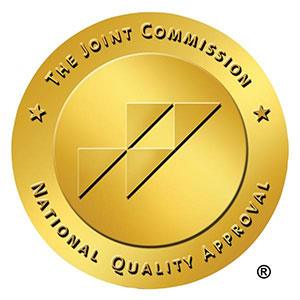Overview
Thrombectomy-Capable Stroke Center
On average, someone in the United States suffers a stroke every 40 seconds and nearly 800,000 people suffer a new or recurrent stroke each year. A stroke occurs when a blood vessel that carries oxygen and nutrients to the brain is either blocked by a clot – called an ischemic stroke (accounts for ~87% of all strokes) or a ruptured blood vessel – called a hemorrhagic stroke (accounts for ~13% of all strokes). While not classified as a stroke, a transient ischemia attack (TIA) is a temporary episode that produces symptoms of a stroke which disappear after a short time. TIAs are strong indicators of a possible major stroke.
With stroke, time is of the essence and immediate treatment to restore blood flow is crucial. Cleveland Clinic Akron General offers the following treatments for acute ischemic stroke:
- Thrombolytic treatment – Medications that are administered through a vein. Examples of such medications include Alteplase or Tenecteplase, which are often called a “clot busting” medications, are administered to ischemic stroke patients who meet eligibility criteria and arrive at the hospital within 0-4.5 hours of the symptom onset.
- Mechanical thrombectomy – a minimally invasive clot retrieval method that involves inserting a very small catheter through an artery until the blocked blood vessel is reached, a small stent retriever is deployed, the clot is captured and removed, and blood flow is restored to the brain. Our hospital utilizes advanced neuroimaging modalities to make best treatment decisions for such treatments.
- Emergent neurosurgical and neurocritical care services for strategies to remove pressure and damage from swelling from the brain in cases of large strokes.
Stroke Center Certification

Akron General has been designated a Thrombectomy-Capable Stroke Center by The Joint Commission. Obtaining this certification signifies that Akron General has undergone an extensive onsite evaluation and meets strict national stroke care standards as required by The Joint Commission.
Earning this recognition demonstrates that Akron General’s stroke program follows national guidelines regarding quality and patient safety, which can significantly improve outcomes for stroke patients. Utilizing advanced technology and innovative treatment options, Akron General’s specially-trained stroke team provides an expert level of comprehensive care, diagnosing and treating patients quickly and significantly improving health and recovery time.
In 2023, Akron General received the American Heart Association/American Stroke Association's Get with the Guidelines® Stroke Gold Plus, Target: Stroke Honor Roll Elite Plus, Target: Stroke Honor Roll Advanced Therapy and Target: Type 2 Diabetes Honor Roll Awards. This achievement recognizes Akron General’s commitment and success in implementing the highest standard of stroke care by ensuring that stroke patients receive treatment according to nationally accepted standards and recommendations.
Telestroke
Our emergency department, neurology and neurosurgical services provide round the clock services to ensure timely treatment of such patients. When a patient presents in our Emergency Department with stroke-like symptoms, emergency providers perform the necessary diagnostic tests, but they also work with the Telestroke team for a complete patient evaluation. By providing patients with quick access to this type of specialized evaluation, patients receive timely treatment close to home, reduce the need for travel and receive high quality, specialized care to minimize the effects of the stroke.
Outcomes
A grading system is used to measure how well blood flow is restored following mechanical thrombectomy treatment. This is called a thrombolysis in cerebral infarction (TICI) score. Scoring is defined as follows:
- Grade 3 – Complete restoration of blood flow in the brain.
- Grade 2b – Complete restoration of blood flow, but slower than normal.
- Grade 2a – Partial restoration of blood flow to the brain.
- Grade 1 – Minimal restoration of blood flow to the brain.
- Grade 0 – No restoration of blood for to the brain.
TICI 2b and TICI 3 are considered successful for restoring blood flow in the brain. At Cleveland Clinic Akron General, 90.2% of patients between (2022-2023) who received thrombectomy treatment for stroke achieved a grade of TICI 2B or 3.
In addition, patients who undergo thrombectomy treatment for stroke are monitored closely for complications, specifically for serious bleeding events after the procedure.
Our Doctors
Learn more about the stroke specialists at Akron General:
- Ahmed Itrat, MD.
- Khaled Asi, MD.
- Abeer Farrag, MD.
- Yousef Mohammad, MD.
- Jenny Tsai, MD.
- Erika Mikula, APP.
- Stephany Hollaeder, APP.
Appointments
Patients who have suffered a stroke can receive follow-up care from a neurologist at Akron General. To schedule an appointment, call 216.636.5860.
Resources
Akron General reminds you that in a stroke every minute counts. If you think someone is having a stroke dial 9-1-1 immediately and remember the BE FAST method to evaluate whether someone may be having a stroke:
- Balance: Watch for a sudden loss of balance.
- Eyes: Is there a sudden loss of vision in one or both eyes? Or double vision?
- Face: Ask the person to smile. Does one side of the face droop?
- Arms: Ask the person to raise both arms. Does one arm drift downward?
- Speech: Ask the person to repeat a simple phrase. Is their speech slurred or strange?
- Time: If you observe any of these signs, call 9-1-1 immediately.
To learn more about stroke and stroke services available through Cleveland Clinic, review our resources:
- Stroke
- What is a stroke?
- Signs and symptoms of a stroke
- Understanding stroke
- Stroke: Know Your Risk Factors
- Stroke: Prevention & Treatment – Diet & Nutrition
- Stroke & Diabetes
- Stroke: Effects on the brain
- Stroke: Behavioral Changes
- Stroke: Tips for caregivers
- Stroke Rehabilitation Services
- Stroke Rehabilitation Specialists
- Stroke Associations and Foundations